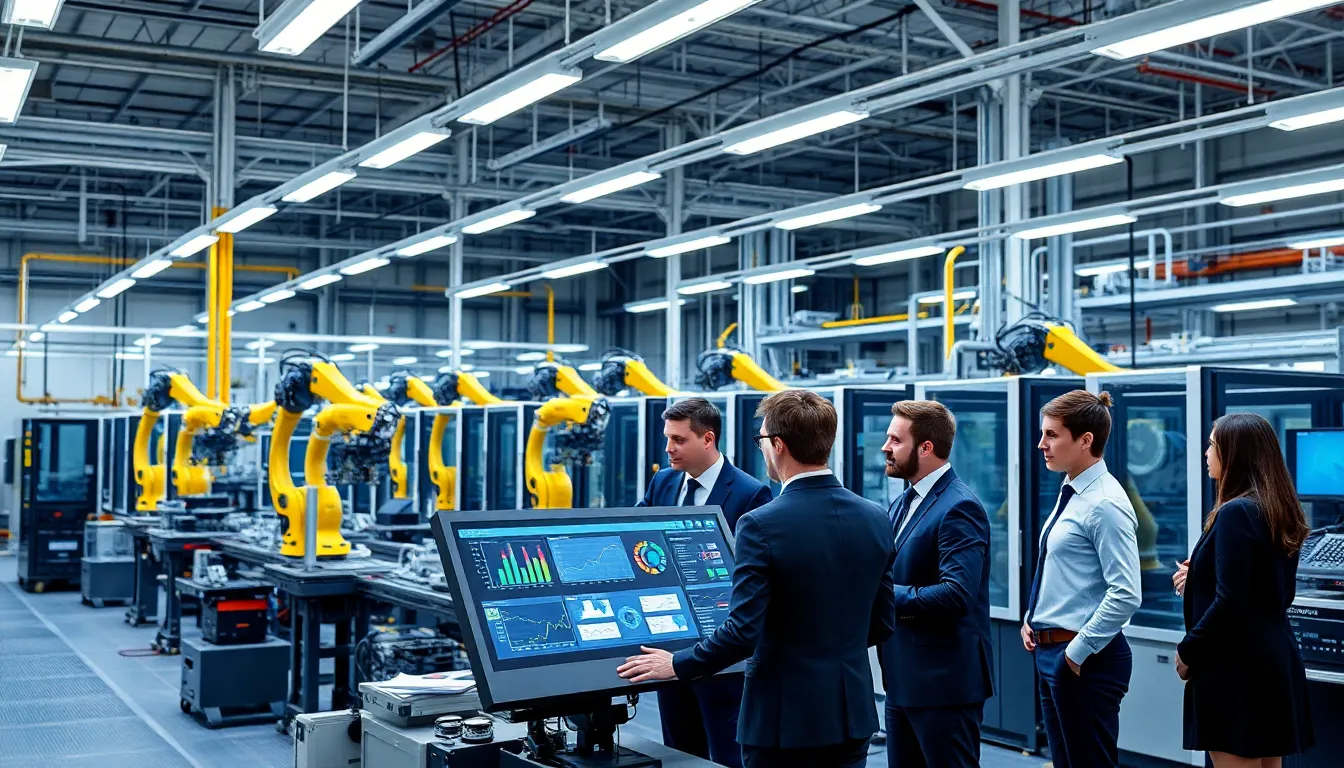Table of Contents
ToggleIn a world where time is of the essence, automation and control have emerged as the superheroes of efficiency, saving the day one mundane task at a time. Imagine a life where your coffee brews as you wake, your lawn mows itself, and your car parks flawlessly while you sip that fresh cup of joe. Sounds dreamy, right? Although it might seem like science fiction, the reality is that automation is revolutionizing how industries operate. From manufacturing to healthcare, this technology is not just a passing trend: it’s a game-changer. Ready to jump into the world of automation and control? Let’s explore what it really means, the benefits that come with it, and the challenges waiting around the corner.
Understanding Automation

Automation, in its simplest form, refers to the use of technology to perform tasks without human intervention. With roots in the industrial revolution, this concept has evolved dramatically. Entities like robots and software are now commonplace in our everyday lives.
Types Of Automation
There are multiple types of automation, each catering to different needs and industries:
- Fixed or Hard Automation: Perfect for mass production. This type involves dedicated equipment designed specifically for a particular set of tasks. Think assembly lines where parts are cranked out in high quantities.
- Programmable Automation: Used for batch production. Here, operators can reprogram machines to handle different tasks once a batch is completed, offering flexibility.
- Flexible or Soft Automation: This is the cool kid on the block. It involves adaptable equipment that can handle various tasks. Ideal for customized production, it’s what allows a car manufacturer to churn out different models on the same assembly line.
The Role Of Control Systems
Control systems work hand-in-hand with automation. They act as the guiding forces that make sure everything operates smoothly. By collecting data and sending commands to machines, control systems ensure that each component of an automated process works as intended. For instance, in a factory, sensors may monitor the temperature and pressure of machinery, if something goes awry, the control system steps in to take corrective action. The synergy between automation and control systems is what leads to consistent quality and improved efficiency.
Benefits Of Automation And Control
When considering automation, the advantages are numerous:
- Increased Efficiency: Machines can operate 24/7 without the need for breaks, leading to significant gains in productivity.
- Cost Reduction: While the initial installation of automation technologies can be high, the long-term savings on labor costs and waste make it a worthwhile investment.
- Improved Quality: Automation minimizes human error, resulting in superior consistency and quality in products.
- Enhanced Safety: Robots can take over dangerous tasks, keeping human workers safe from potential hazards. From lifting heavy loads to handling hazardous materials, automation reduces the risk of workplace injuries.
- Data Collection and Analysis: Automation enables the collection of vast amounts of data that can be analyzed to further improve processes. For instance, health organizations use data from automated patient monitoring systems to optimize treatment plans.
- Scalability: Businesses can easily scale operations up or down without the headache of extensive retraining or hiring processes.
Challenges In Implementing Automation
Even though the benefits, the road to automation is not without its bumps:
- Initial Setup Costs: The upfront investment in machinery and software can be daunting. Many businesses may hesitate to embrace automation due to the financial implications.
- Integration Issues: Retrofitting existing systems to work with new automation technologies can be a headache. Companies may face compatibility issues and downtime during the transition.
- Job Displacement: One of the most discussed challenges is the concern over job loss. While automation creates new jobs in tech and management, it can render some traditional roles obsolete.
- Skill Gap: The workforce may require new training to work with advanced systems. Organizations must invest in staff training to ensure a smooth transition.
- Cybersecurity Vulnerabilities: Automated systems introduce new risks. If not adequately protected, these systems can fall prey to cyberattacks, leading to operational disruption.
Current Trends In Automation Technologies
The landscape of automation is constantly evolving. Recently, several trends have emerged:
- Machine Learning and AI: These technologies allow systems to adapt and improve over time. They’re particularly useful in predictive maintenance and quality control.
- Robotics: Robots are becoming more sophisticated, capable of performing tasks that require dexterity and precision. Collaborative robots, or cobots, work alongside humans, enhancing productivity without replacing jobs.
- Internet of Things (IoT): Connecting devices and machinery to the internet facilitates real-time data sharing and monitoring, providing insights that drive efficiency. Smart factories are foreseen not just as a novelty but as the future of manufacturing.
- Cloud Automation: More businesses are shifting operations to the cloud, leveraging its scalability and flexibility. This enables remote management of automated systems, making them more accessible than ever.
Future Of Automation And Control
The horizon for automation and control technologies looks promising. Here’s what to expect:
- Enhanced AI and Robotics: Future advancements will create even more sophisticated robots, capable of sensing, learning, and responding in real-time. Think of automated assistants that can learn and adapt to user preferences.
- Widespread Adoption: As costs decrease and technology becomes more accessible, more industries, which previously resisted automation, will adopt these systems.
- Integration of Augmented Reality (AR): AR will allow operators to visualize complex processes in real-time, enhancing training and aiding maintenance. Imagine a technician wearing AR glasses and receiving real-time data about equipment flaws.
- Sustainability through Automation: As citizens become more environmentally aware, automation will play a crucial role in streamlining energy consumption and reducing waste. Businesses will leverage these technologies to meet regulatory demands and achieve sustainability goals.







